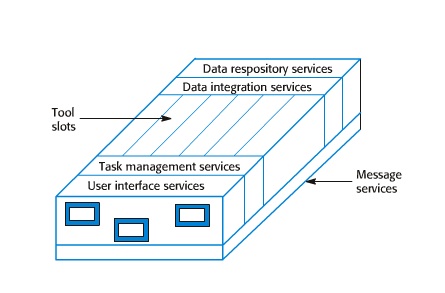
A reference model for CASE (computer-aided software engineering) environments identifies five sets of services that such an environment should provide. It should also provide ‘plug-in’ facilities for individual CASE tools that use these services. A diagram of this model is shown in Figure 1.

Figure 1. The CASE environment reference model
The five levels of service in the CASE reference model are:
This reference model tells us what might be included in any particular CASE environment, although it is important to emphasise that not every feature of a reference architecture will be included in actual architectural designs. It means that we can ask questions of a system such as ‘how are the data repository services provided?’ and ‘does the system provide task management?’
Again, the principal value of this reference architecture is as a means of classifying and comparing integrated CASE tools and environments. In addition, it can also be used in education to highlight the key features of these environments and to discuss them in a generic way.